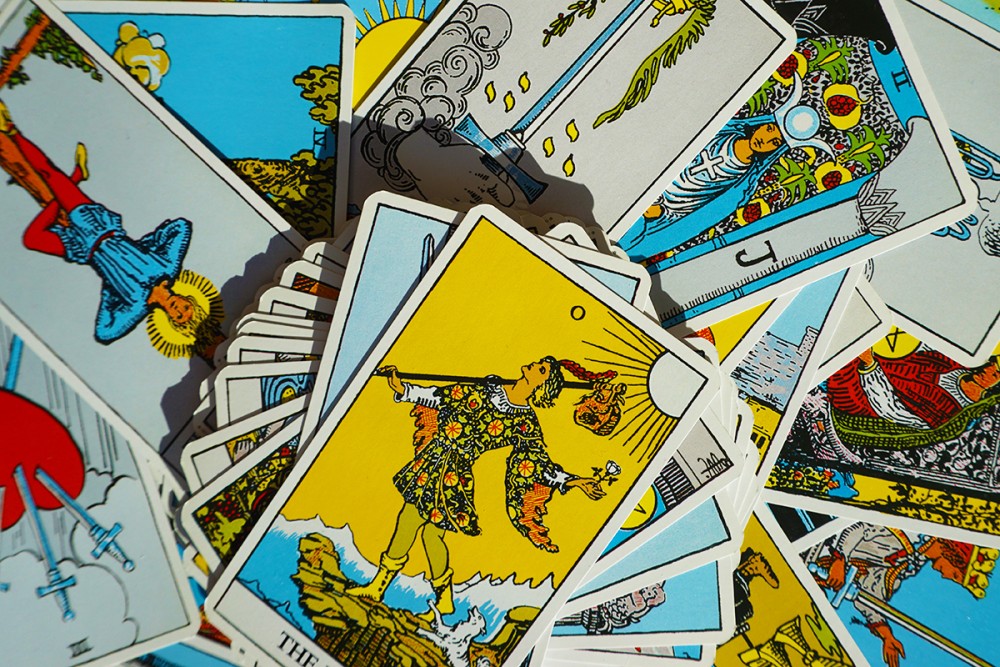The woman behind tarot’s strange beauty
I wonder how Pamela Colman Smith worked it out in reverse, led by her own creativity straight to the Catholic Church—the place I’ve tried to leave.

My social circle of lapsed Catholics, exvangelicals, and other “deconstructing” Christians may have lost the narrative threads we followed for much of our lives, but we can rattle off our rising signs, Enneagram numbers, and Myers-Briggs types like our Social Security numbers. In the absence of the ready-made life story I had in Catholicism, it sometimes feels like I’m begging whatever magic mirror I can find to please, tell me who I am!
For many of those searching for new spiritual practices and meaning, reading tarot cards satisfies a yearning for a coherent personal story transmitted through a ritual. Tarot also encourages the development of private intuition, something that has too often been dismissed, belittled, or even vilified in patriarchal traditions. A 2021 survey showed that 51 percent of a sample population between the ages of 13 and 25 engage in tarot cards or fortune-telling. But tarot is also surging in popularity with my elder millennial and Gen X peers. I recently saw a tarot T-shirt in a J.Crew store—not exactly a purveyor of trends for anyone under 30.
Many Christians object to tarot because of its associations with divination and fortune-telling. But others are increasingly using the cards as a tool for self-directed spiritual contemplation. Gil Stafford, a retired Episcopal priest and spiritual director, incorporates tarot in his practice along with the Enneagram and Myers-Briggs. Brittany Muller, author of The Contemplative Tarot: A Christian Guide to the Cards, uses tarot cards in conjunction with the Book of Common Prayer to practice visio divina. Writer and spiritual director Carl McColman offers an online course on the anonymous book Meditations on the Tarot, a classic text of Christian mysticism with an afterword by Swiss theologian Hans Urs von Balthasar (a copy of which can be seen in a photo of a stack of books on Pope John Paul II’s desk).




